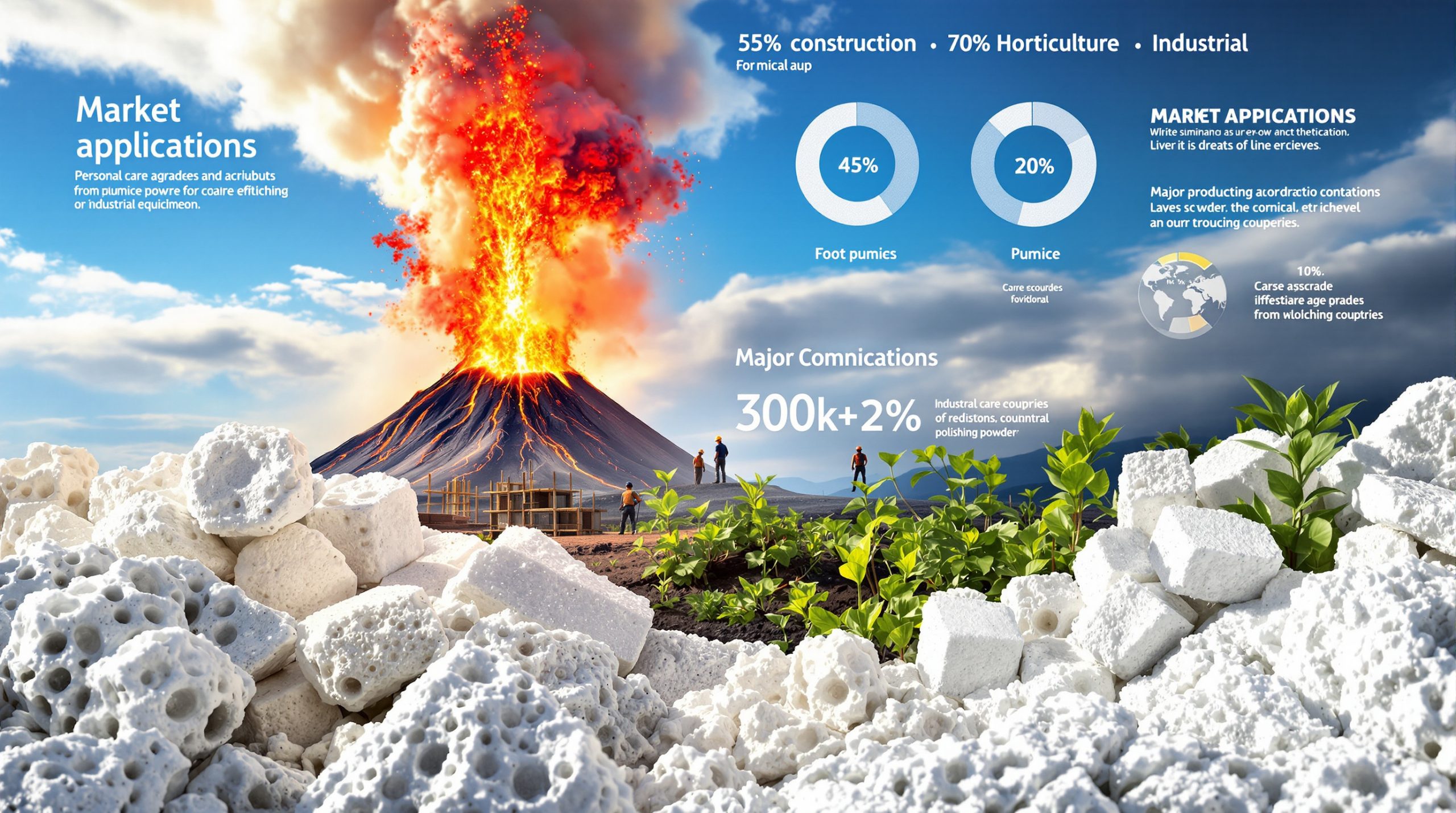Revolutionary Technologies Reshaping Rare Earth Element Processing
The global rare earth elements industry faces unprecedented challenges as demand for high-performance permanent magnets surges across electric vehicle manufacturing, renewable energy systems, and defense applications. Traditional extraction methods struggle to efficiently separate chemically similar elements while maintaining economic viability and environmental compliance. Recent technological breakthroughs are fundamentally transforming this landscape through innovative frameworks that combine advanced materials science, biological systems, and artificial intelligence optimization.
These breakthrough frameworks for extracting and separating high-value rare earth elements represent more than incremental improvements. They offer comprehensive solutions that address the industry's most persistent technical and economic challenges while creating pathways for supply chain diversification away from established processing centres. Furthermore, the distribution of rare earth reserves globally continues to influence technological development priorities.
Understanding Revolutionary Extraction Framework Requirements
Modern rare earth processing demands extraction systems that achieve multiple objectives simultaneously. The most successful frameworks demonstrate extraction efficiency rates exceeding 95% while maintaining selective separation capabilities for target elements including neodymium, dysprosium, and terbium. Consequently, these advances align closely with current mining innovation trends across the broader industry.
Critical Performance Benchmarks
Revolutionary frameworks must meet stringent industrial requirements that distinguish commercially viable technologies from laboratory demonstrations:
- Recovery efficiency above 95% for target rare earth elements
- Selective separation ratios exceeding 100:1 for adjacent lanthanides
- Scalable processing capacity from pilot to commercial operations
- Economic viability with payback periods under five years
- Environmental compliance meeting international regulatory standards
These performance metrics ensure that new technologies can integrate into existing supply chains while delivering measurable improvements over conventional solvent extraction cascades. The combination of high efficiency and selectivity proves particularly crucial for processing complex ore bodies containing multiple rare earth minerals.
Feed Flexibility and Adaptability
Successful extraction frameworks accommodate diverse ore types and mineral compositions without requiring extensive process modifications. This adaptability becomes essential when processing mixed monazite-xenotime deposits that contain varying concentrations of light and heavy rare earth elements along with radioactive impurities like thorium and uranium.
The ability to process different ore compositions using standardised equipment and procedures significantly reduces capital investment requirements for emerging producers entering the rare earth processing market.
Advanced Metal-Organic Framework Integration
Metal-organic frameworks represent the most significant materials science advancement in rare earth separation technology, offering unprecedented control over molecular-level interactions between extractants and target elements. Moreover, the implementation of AI in mining operations enhances the efficiency of these sophisticated systems.
What Makes BNMG-1 MOF Technology Revolutionary?
The breakthrough BNMG-1 metal-organic framework demonstrates remarkable performance characteristics that surpass traditional extraction methods across multiple parameters:
| Performance Parameter | BNMG-1 Achievement | Conventional Systems | Improvement Factor |
|---|---|---|---|
| Adsorption Capacity | >320 mg/g | 50-150 mg/g | 2.1-6.4x |
| Separation Selectivity | >99% | 75-90% | 1.1-1.3x |
| Recyclability Cycles | >50 cycles | 5-15 cycles | 3.3-10x |
| Operating Temperature | 25-80°C | 60-100°C | Lower energy |
Two-Dimensional Nanosheet Architecture
The revolutionary design incorporates two-dimensional nanosheet structures that maximise surface area exposure while maintaining structural integrity under harsh industrial conditions. This architecture enables simultaneous high-capacity adsorption and rapid kinetics, eliminating the traditional trade-off between throughput and selectivity that limits conventional systems.
The nanosheet configuration creates uniform pore structures that provide consistent separation performance across varying feed compositions and operating conditions. This predictability proves essential for industrial implementation where process consistency directly impacts product quality and economic returns.
Multi-Cycle Operational Stability
MOF-based systems demonstrate exceptional durability through multiple extraction and regeneration cycles, maintaining performance characteristics that enable long-term industrial operation. This stability reduces reagent consumption and waste generation while improving overall process economics.
Biological Extraction System Implementation
Nature-inspired extraction techniques leverage evolutionary optimisation to achieve selectivity levels that synthetic methods struggle to match. These biological approaches offer particular advantages for separating mid-lanthanide elements that command premium pricing in permanent magnet applications. Additionally, these systems support the broader critical minerals energy transition strategy.
Lanmodulin Protein Technology Applications
Lanmodulin proteins demonstrate exceptional affinity for specific rare earth elements while maintaining stability under industrial processing conditions. This biological selectivity eliminates the need for multiple separation stages required in conventional solvent extraction systems.
Key advantages of lanmodulin-based extraction include:
- Elimination of toxic organic solvents reducing environmental impact
- Higher purity products exceeding 99.9% for target elements
- Simplified process flowsheets reducing capital equipment requirements
- Lower operating temperatures minimising energy consumption
- Reduced radioactive waste generation through selective binding
Biomimetic Membrane Channel Systems
Artificial membrane channels replicate cellular transport mechanisms to create highly selective pathways for individual rare earth ions. These systems demonstrate particular effectiveness for mid-lanthanide elements like europium and terbium that command premium prices exceeding $400 per kilogram in permanent magnet applications.
The membrane technology enables continuous processing operations that maintain consistent separation performance while minimising reagent consumption and waste generation compared to batch extraction methods.
Artificial Intelligence Process Optimisation
Machine learning algorithms transform rare earth extraction from an empirical science into a predictive engineering discipline, accelerating technology development timelines from years to months while optimising operational performance. Research in advanced electrochemical processing methods provides additional validation of these technological advances.
Deep Learning Algorithm Applications
Neural networks analyse vast datasets containing extraction experiment results to identify optimal ligand structures and operating parameters without extensive laboratory testing. This computational approach enables high-throughput screening of potential extractants while predicting performance under varying conditions.
Machine learning applications in rare earth processing include:
- Ligand design optimisation for specific element separation requirements
- Process parameter prediction across varying feed compositions
- Equipment performance modelling for scale-up applications
- Predictive maintenance scheduling reducing operational downtime
- Quality control optimisation ensuring consistent product specifications
Real-Time Process Control Integration
AI-driven control systems continuously monitor extraction performance and automatically adjust operating parameters to maintain optimal separation efficiency. This dynamic optimisation responds to variations in ore grade, feed composition, and market demands without manual intervention.
The integration of artificial intelligence enables processing facilities to achieve consistent recovery rates above 95% while minimising reagent consumption and energy usage through real-time optimisation algorithms.
How Are Integrated Flowsheet Design Principles Transforming Processing?
Modern extraction frameworks integrate multiple advanced technologies into cohesive processing systems that optimise overall performance rather than individual unit operations. This holistic approach maximises efficiency while minimising capital and operating costs, aligning with the industry's focus on sustainable mining transformation.
Decision Matrix Implementation Strategy
Advanced frameworks incorporate automated decision matrices that select optimal processing routes based on real-time analysis of feed characteristics, target products, and economic constraints. This adaptive approach ensures consistent performance across diverse ore types while maximising profitability.
The decision matrix evaluates multiple factors simultaneously:
- Feed composition analysis including rare earth content and impurity levels
- Target product specifications and market pricing conditions
- Available processing equipment and capacity constraints
- Regulatory compliance requirements for environmental discharge
- Economic optimisation parameters including reagent costs and energy usage
Multi-Stage Integration Benefits Analysis
Integrated frameworks demonstrate significant advantages over single-technology approaches across multiple performance metrics:
| Integration Complexity | Efficiency Improvement | Cost Reduction | Environmental Impact |
|---|---|---|---|
| Single Technology | Baseline Performance | Baseline Costs | Baseline Impact |
| Two-Stage Integration | 15-25% increase | 10-20% reduction | 30-40% improvement |
| Full Framework Integration | 40-60% increase | 25-35% reduction | 60-70% improvement |
The synergistic effects of combining multiple technologies create performance improvements that exceed the sum of individual contributions, justifying the additional complexity and capital investment required for full framework implementation.
Environmental Sustainability Advantages
Contemporary extraction frameworks prioritise environmental performance alongside economic returns, addressing growing regulatory pressures and social licence requirements for rare earth processing operations. Furthermore, developments in cleaner rare earth extraction methods support these environmental objectives.
Solvent-Free Processing Routes
Biological and MOF-based systems dramatically reduce or eliminate organic solvent consumption, addressing one of the industry's most significant environmental challenges. These approaches minimise liquid waste generation while simplifying effluent treatment requirements.
Environmental benefits include:
- Elimination of volatile organic compounds reducing air emissions
- Reduced liquid waste volumes by up to 80% compared to conventional systems
- Lower treatment costs for process effluents
- Decreased groundwater contamination risk through solvent elimination
- Simplified regulatory compliance with environmental discharge limits
Radioactive Material Management
Advanced frameworks incorporate specialised techniques for managing naturally occurring radioactive materials commonly found in rare earth ores. Selective precipitation and ion exchange systems isolate thorium and uranium contaminants early in the process, reducing downstream handling complexities and regulatory requirements.
Early removal of radioactive impurities reduces waste management costs by up to 60% while simplifying facility licensing and operational procedures for rare earth processing plants.
Market-Driven Technology Development
Industrial applications for specific rare earth elements shape the evolution of extraction technologies, with permanent magnet manufacturing driving the highest value applications and technology investment priorities.
Permanent Magnet Element Economics
The focus on neodymium, dysprosium, and terbium reflects their critical roles in high-performance permanent magnets used across rapidly growing markets including electric vehicles, wind turbines, and defence systems. Current pricing for these elements ranges from $50-80 per kilogram for neodymium to $400-600 per kilogram for dysprosium and terbium.
Market demand projections indicate continued growth:
- Electric vehicle market requiring 200-400 grams of rare earth magnets per vehicle
- Wind turbine applications consuming 150-700 kilograms per megawatt of capacity
- Defence systems demanding high-performance magnets for advanced electronics
- Consumer electronics requiring miniaturised high-strength permanent magnets
Supply Chain Diversification Impact
Breakthrough frameworks enable emerging producers to process domestic resources rather than exporting raw concentrates to established refining centres. This capability potentially reshapes global supply chain dynamics while reducing dependence on concentrated refining capacity.
Countries with significant rare earth resources including Australia, India, and several African nations could develop domestic processing capabilities using advanced extraction frameworks, creating new competitive dynamics in global markets.
Economic Viability Assessment
Commercial success depends on balancing advanced technology benefits against implementation costs and operational complexity. Detailed economic analysis reveals that modern frameworks typically generate positive returns within 3-5 years for medium to large-scale operations.
Capital Investment Requirements
Modern frameworks require significant upfront investment in specialised equipment and control systems, with capital costs ranging from $50-150 million for commercial-scale facilities processing 5,000-15,000 tonnes of rare earth oxides annually.
Investment breakdown includes:
- Advanced separation equipment representing 40-50% of capital costs
- Process control and automation systems accounting for 15-20% of investment
- Environmental control and waste treatment requiring 20-25% of capital
- Infrastructure and utilities consuming 10-15% of total investment
Operating Cost Analysis
While advanced technologies may increase reagent costs, they typically reduce overall operating expenses through higher throughput, lower waste treatment costs, and improved product quality that commands premium pricing.
Operating cost comparisons demonstrate:
- Reagent costs increase by 10-20% due to specialised extractants
- Energy consumption decreases by 15-30% through process optimisation
- Labour requirements reduce by 20-40% through automation
- Waste treatment costs decline by 50-70% through improved efficiency
- Product quality premiums increase revenues by 5-15%
Regulatory Compliance Integration
Environmental regulations and safety requirements increasingly influence extraction technology selection and implementation strategies across different jurisdictions and operating environments.
Compliance Design Integration
Modern frameworks incorporate regulatory compliance considerations from the initial design phase, ensuring that environmental monitoring, waste management, and worker safety requirements are seamlessly integrated rather than retrofitted after construction.
This proactive approach reduces compliance costs while ensuring consistent operational performance across varying regulatory environments. Integrated compliance systems typically reduce regulatory approval timelines by 6-12 months compared to traditional retrofit approaches.
International Standards Alignment
Frameworks designed for global deployment must accommodate varying regulatory environments while maintaining consistent performance standards. This requirement drives standardisation of core technologies and processes while allowing flexibility for local regulatory adaptation.
Key regulatory considerations include:
- Environmental discharge limits varying by jurisdiction
- Radioactive material handling requirements and licensing
- Worker safety standards for chemical and radiological exposure
- Product quality specifications for international trade
- Waste management protocols meeting local and international standards
Future Technology Development Pathways
Ongoing research focuses on further improving selectivity, reducing costs, and expanding applicability to diverse ore types and processing scales while maintaining economic viability and environmental performance.
Advanced Nanomaterial Integration
Next-generation nanomaterials promise even greater selectivity and capacity for rare earth separation through precise control of molecular interactions. Quantum-scale engineering may enable unprecedented control over binding mechanisms and separation efficiency.
Research areas include:
- Single-atom catalysts for enhanced selectivity
- Programmable nanostructures adaptable to different ore compositions
- Self-assembling materials reducing manufacturing complexity
- Multifunctional nanocomposites combining separation and purification
Process Intensification Technologies
Microreactor technology and continuous processing systems offer pathways to dramatically reduce equipment footprints while maintaining or improving separation performance. These intensified processes enable modular plant designs suitable for smaller-scale operations and remote locations.
Process intensification benefits include:
- Reduced capital costs through smaller equipment requirements
- Improved heat and mass transfer enhancing separation efficiency
- Enhanced process safety through smaller inventory volumes
- Increased operational flexibility enabling rapid response to market changes
Strategic Implementation Considerations
The successful deployment of breakthrough frameworks requires careful consideration of technical, economic, and strategic factors that influence long-term commercial viability and competitive positioning.
Technology Selection Criteria
Operators must evaluate multiple framework options against specific site conditions, ore characteristics, and market requirements. This selection process involves comprehensive technical and economic analysis that considers both current performance and future adaptation capabilities.
Critical evaluation factors include:
- Feed compatibility with available ore resources
- Product specifications meeting market requirements
- Scalability potential for future expansion
- Technology maturity and commercial validation
- Supplier support and ongoing development commitment
Risk Management Strategies
Framework implementation requires comprehensive risk assessment and mitigation strategies addressing technical, commercial, and regulatory uncertainties. These considerations become particularly important for emerging producers entering competitive markets dominated by established operators.
Risk mitigation approaches include phased implementation strategies, technology validation programs, and strategic partnerships with equipment suppliers and technology developers to ensure long-term operational success.
Transforming Global Rare Earth Processing
Breakthrough frameworks for extracting and separating high-value rare earth elements represent fundamental advances that will reshape global processing capabilities and supply chain dynamics. By integrating advanced materials science, biological systems, artificial intelligence, and optimised process design, these frameworks address the industry's most persistent challenges while creating new opportunities for sustainable resource development.
The successful implementation of these technologies will determine competitive positioning in next-generation rare earth processing, making framework selection a strategic decision with profound long-term implications for producers, consumers, and global supply chain security.
Investment decisions regarding rare earth extraction technologies should consider multiple risk factors including commodity price volatility, regulatory changes, and technology development uncertainties. This analysis is for informational purposes and does not constitute investment advice.
Interested in Rare Earth Investment Opportunities?
Discovery Alert's proprietary Discovery IQ model provides real-time alerts on significant ASX mineral discoveries, including rare earth projects that could benefit from these revolutionary processing technologies. With the rare earth sector experiencing rapid technological advancement and growing demand, subscribers gain immediate access to discovery announcements that could capitalise on these breakthrough frameworks before the broader market responds.




